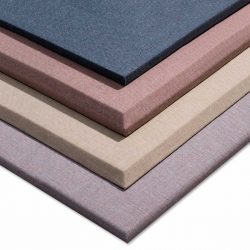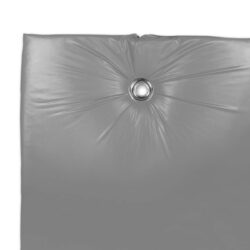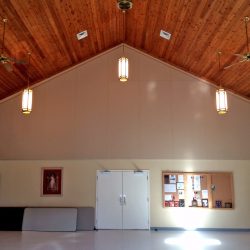New Kent Elementary School
The Issue
The New Kent Elementary School needed a solution to help control the sound being generated in their gymnasium because kids can be loud. For some, that may be the understatement of the century. In general, if given a ball and some space to run around, even the quietest of children can make it difficult for an instructor to be heard. Gymnasiums, in particular, are a perfect storm for loud sounds, due to their large volume, hard surfaces, and the activities that take place in them. We acoustically treat quite a few of them. When New Kent County reached out to us, we once again transformed another noisy gymnasium into an instrument for higher physical education.
The Challenge
This particular gymnasium is a perfect example. It has the dimensions and surface composition of a typical gymnasium with very characteristic acoustical needs. It’s roughly 106′ x 67′ x 26′ high with hardwood flooring, CMU (Concrete Masonry Unit) walls, and a metal deck ceiling. The volume of the room and its composition was producing a reverb time (RT60) of about 3.2 seconds. This means that a loud sound, balloon pop, hand clap, or what have you, will echo for a little over 3 seconds before dying away.
Given that people speak by modulating between vowel and consonant sounds rapidly every 0.5 seconds or so, you can quickly see how the sound would begin to overlap. It’s exactly this effect that makes it difficult to understand what someone is saying over a PA system in a large space. To make matters worse, it’s also exacerbating to try and shout over yelling, laughing, and playing with elementary school-age children.
The Solution
Gymnasiums are actually fairly easy to treat in terms of the mathematics involved. To calculate the absorption required, it’s a simple relationship between the volume of the room and the reverb time. Since a gym is typically a flat, rectangular box, there are not a lot of variables in the equation. The trick is to evenly space out the acoustic material as much as possible. In a gym, materials need to be up out of the way to reduce incidental damage from balls and things. Here, to keep costs to a minimum, we went with 2″ thick AlphaSorb® PVC Plastic Acoustic Sound Baffles in the ceiling. They easily suspend using steel rope attached to trusses with beam clamps. For the walls, we chose AlphaSorb® Fabric Wrapped Acoustic Panels in a 2″ thickness at specified intervals.
The Result
The New Kent Elementary School’s predicted result in reverb time after treatment was 1.5 seconds. The Reverb Test (RT60) conducted after treatment was at 1.46 seconds, below expected. We couldn’t ask for a better result. The PA system is now very intelligible. The teachers and educators are better able to communicate instructions to students, without having to shout. The benefit is a calmer and more pleasant environment for the students.
At the end of the day, the usage of the space dictates the desired RT60. Case in point, a gymnasium is not a recording studio or a video teleconferencing room. There is no need to turn this space into a “Padded Room”, so to speak. Having said that, there is research in place showing that 1.5 seconds is, in fact, the optimal RT60 for speech intelligibility for gymnasiums, so it should be the benchmark that folks shoot for when budgeting these projects. The takeaway is that treating spaces like this is not a guessing game, but a very engineered approach that gets it right on the first try without spending too much in over-engineering it.
To learn more about how Acoustical Solutions can solve your noise control problems, use our contact form, call one of our Acoustical Sales Consultants at (800) 782-5742, or visit us on the web at acousticalsolutions.com.











